The next day was Thursday and as we walked to the car, we realized that the wind had died down, the sun was bright, and the day was heating up. The plan was to first visit the 10th century Chateau de Baux. As we approached, we could see the castle in the distance perched on top of a tall mountain of solid white and beige stone. Vere found a place to pull over to take a long-distance picture. He had some difficulty climbing the steep embankment, but he finally got up and took his picture. But when he came back down the slope, he slipped and ended up scraping his palms. Then as we got closer to the mountain where the castle was perched on top, we could see that the road was quite steep. There was a trail of cars parked on lower curves, which indicated that we would have to walk the majority of it. With Vere’s palms still stinging, the distance and steepness of how far we would need to walk, and the now mounting heat, we decided to skip it and go on to our next site.
We continued past the turnoff to the castle and just around the bend, the terrain began to change. Huge white walls of sandstone began to appear on both sides of the road. Then we saw the entrance to the Carriéres Lumières. Like the Lumière show in Paris showing the story of Tintin, this one advertised a show of fine art; from Vermeer to Van Gogh and the Dutch Masters, with classical and some operatic music.
This was in no ordinary building. In fact, it was not in a building at all, as we found ourselves entering a series of huge quarried, squared limestone caves. Like in Paris, giant projections showed famous paintings, but with the aid of CGI digital animation effects, the still paintings moved; arms were raised with weapons, ocean waters swirled, ships were tossed across a sea floor that we walked on. We sat on cut limestone blocks while it entertained us for about forty minutes. The Girl With a Pearl Earring by Vermeer stared down at us, and then flowers exploded in profusion from a painting by Jan Devidz de Heem. If we thought the Tintin show was good, this was even more than impressive, and we lingered to watch it repeat.
Once back in the car, we continued our way to the next town of St.-Remy-de-Provence. Built from honey-colored stone, with Plane-shaded trees down the streets, it is a favorite with jetsetters. Our first task was to find a place for lunch, and then explore. We found the only central lot in the town and got the last parking space with our small car. All we had to do was cross the street and enter the Brasserie du Commerce restaurant. Again, very few people were indoors. Vere ordered Carbonara. The pork cheek bits and pasta were served with the raw egg yolk and shredded Parmesan served on the side, so he could mix it himself. His drink came with a glass straw and clinked against his glass of Orangina. It was nice to see a place conscientious and not using paper straws. I ordered the fish burger, which came with salad and fries. I set the bread and fries aside and enjoyed the fish and salad.
Since we had plenty of time on the meter, we walked the older section of town. We found the building we were searching for, now called the Hotel de Sade. Completely renovated, this building was the ancestral home of the de Sade family, built in 1513 by Balthazar de Sade. It now houses the archaeological finds from the local Roman ruins. Unfortunately, it was closed, as their opening season was not to begin until May 16, three days even later than the previous town we had visited. The back narrow walkways were filled with old stone homes, trailing bougainvillea, and cats in the window. At the end of our walk, we stopped at a creperie and each had a sweet crepe, which we had been wanting for days. He had one with butter and sugar and I had one with apricot jam.
Then it was on to our next stop, which was the Monastére St. Paul de Mausole (the monastery of St. Paul of Mausole). The monastery turned asylum is famous for one of its former residents, Vincent van Gogh, who admitted himself in 1889. It was there that he had his most productive period of painting with over 150 drawings and 150 paintings. Within the span of ten years that he sketched and painted there, it added to his more than total 2,100 works. The church is the first thing one sees, but the living quarters of the asylum, now turned hospital was to the left of the church.
Vincent van Gogh’s short life was filled with psychotic episodes and delusions, and in one of his fits is when he cut off his ear, and thus committed himself. He tried to kill himself several times by eating his paints and varnish, which only sickened him. There is also a re-creation of the room he spent his time in.
We looked out the window from his room and saw gardens with rows of lavender and a field filled with red poppies. When one sees the poppy fields, one can appreciate why he wanted to stay and paint. As opposed to the poppies that grow in California which are orange, the ones we saw all around Provence were bright red. The beauty of the place was only eclipsed by the knowledge that Vincent shot himself in 1890. He was only 37 years old.
While Vere was in the gift shop next to the church, I sat within the shaded Romanesque cloister, waiting for him. The central garden of the cloister was filled with picture perfect colorful flower beds. It was peaceful, but I heard the sad coo of a lone dove. Some roses grew up a corner pillar in the garden. The flowers on the sunny side of the pillar were in full bloom, while on the shaded side dried blossoms had fallen, and with a light breeze they skidded across the gray stone walkway. It reminded me of the many troubled lives that had once sought refuge there, the blush of life upon their cheek, but within, thoughts were broken and emotions torn. Then when their lives had passed, their spirits were whisked away down that same cloistered hall, like fallen blossoms. My attention was taken by a bird that flew into a crack in the cloister wall. I went to see how it managed and heard the peep-peep of baby birds within. Life was continuing within those darkened halls.
Then we drove to the archaeological site of the ancient site of Glanum. A Roman colony founded in 27 C.E., it had been covered over with centuries of soil. Eventually a farmer built a house and planted a field. That was all before archaeologists in 1921 finally discovered the deserted farm, removed the topsoil and discovered the ancient streets below. It turned out to be a huge ruined city, dedicated to Emperor Augustus. Just one picture does not do it justice. The place is huge.
Several pillars from two temples have been restored that had once been sacred spaces. Remnants of a healing well and springs were found that were associated with Hercules, and Valetudo the goddess of health. A large Mausoleum marks the opening of a necropolis, and lines of stones on the ground outlined homes and rooms. Even some pilasters with Corinthian capitals were found, along with cobbled streets, stone conduits for water, and rooms with large amphorae hats, left clues to learning that the Romans actually smoked their wine to help preserve it.
When done, we checked out the giftshop, and then drove the 1½ hour drive back to Aix. After returning the car to the garage, we briefly stopped at the Monoprix grocer for a few more things to prepare dinner at the apartment.
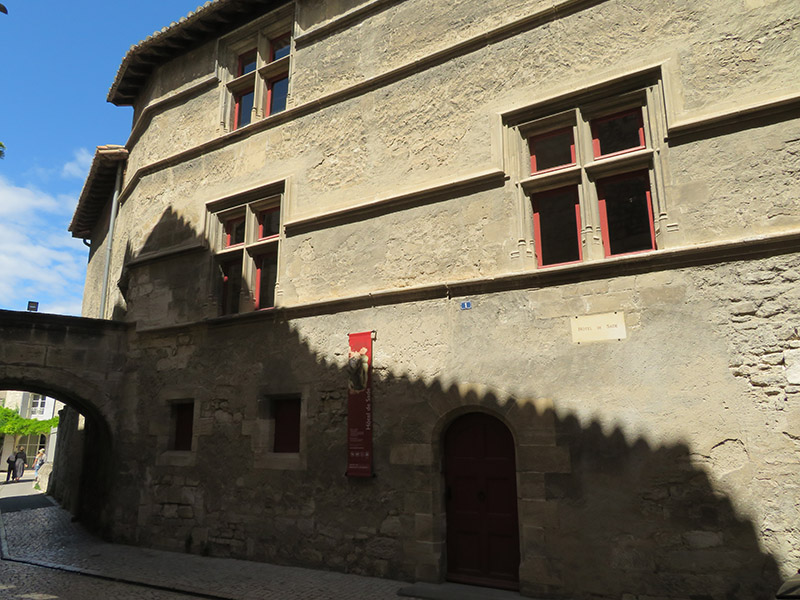
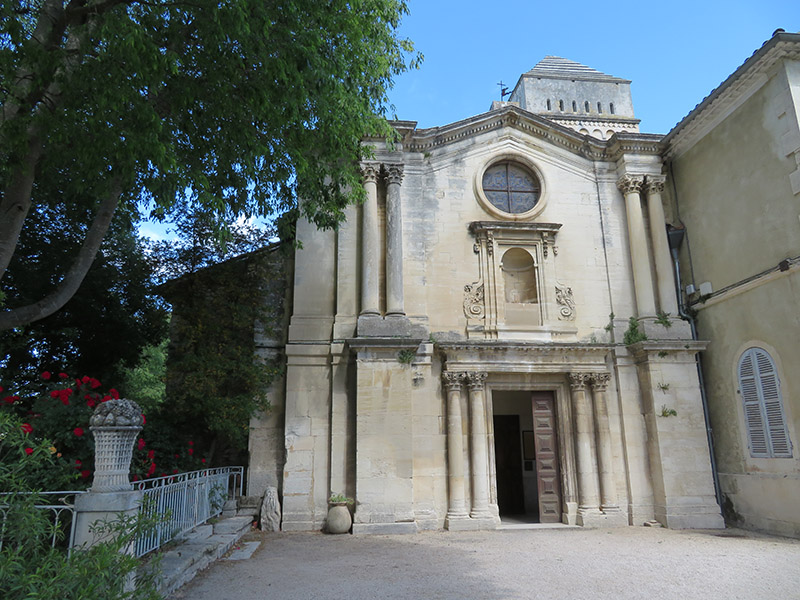
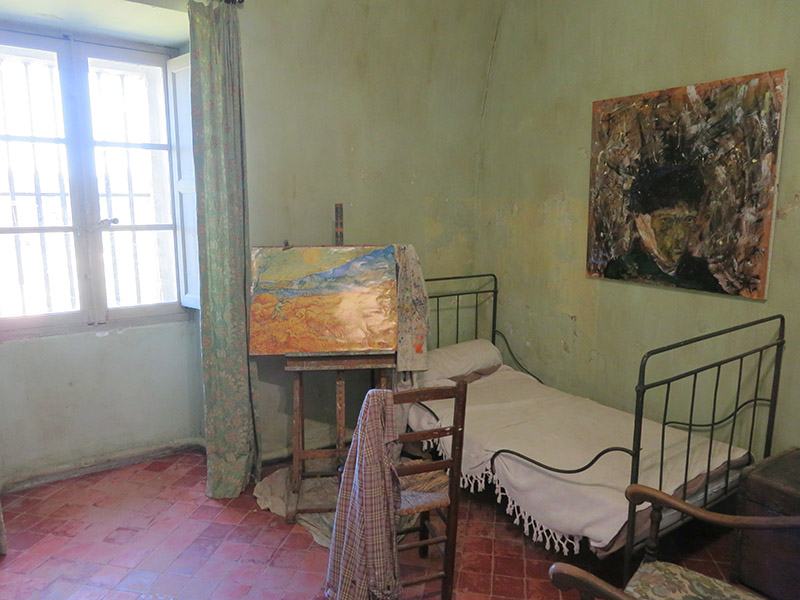

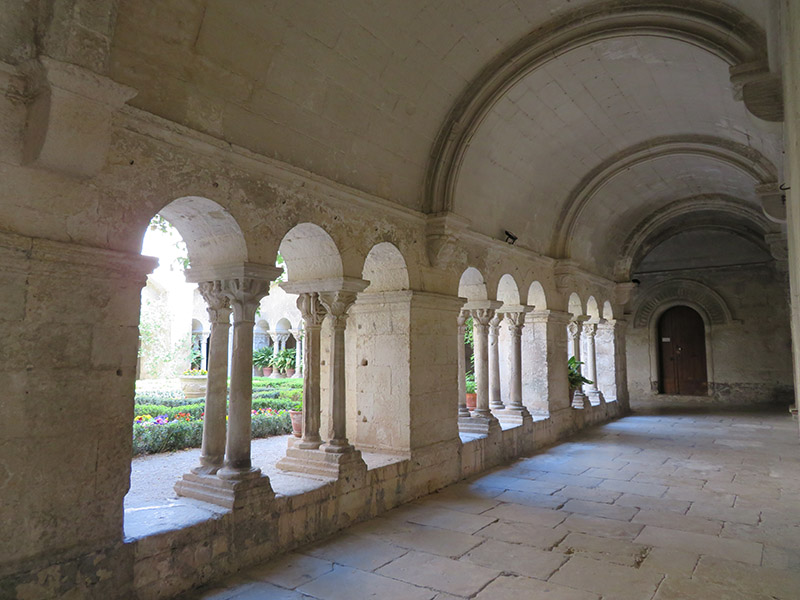
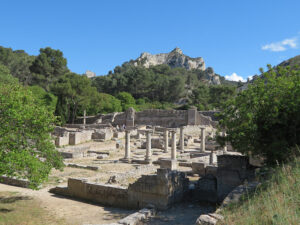
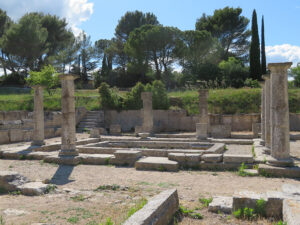
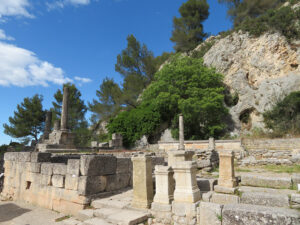
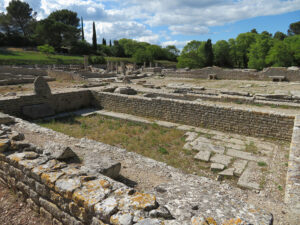
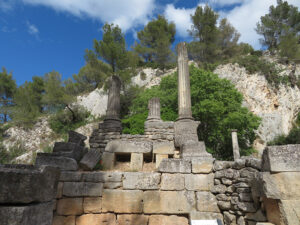
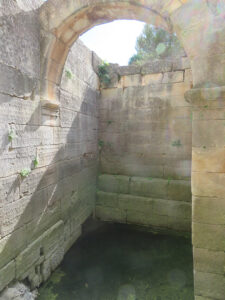
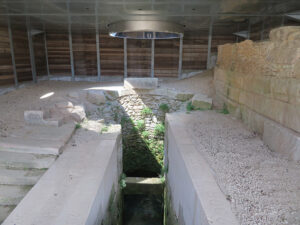
 The official website of Lita-Luise Chappell, writer on sex, magic, food, distant lands, and everyday life with articles, poetry, novels, travelogues, rituals, cookbooks, and short-stories.
The official website of Lita-Luise Chappell, writer on sex, magic, food, distant lands, and everyday life with articles, poetry, novels, travelogues, rituals, cookbooks, and short-stories.
